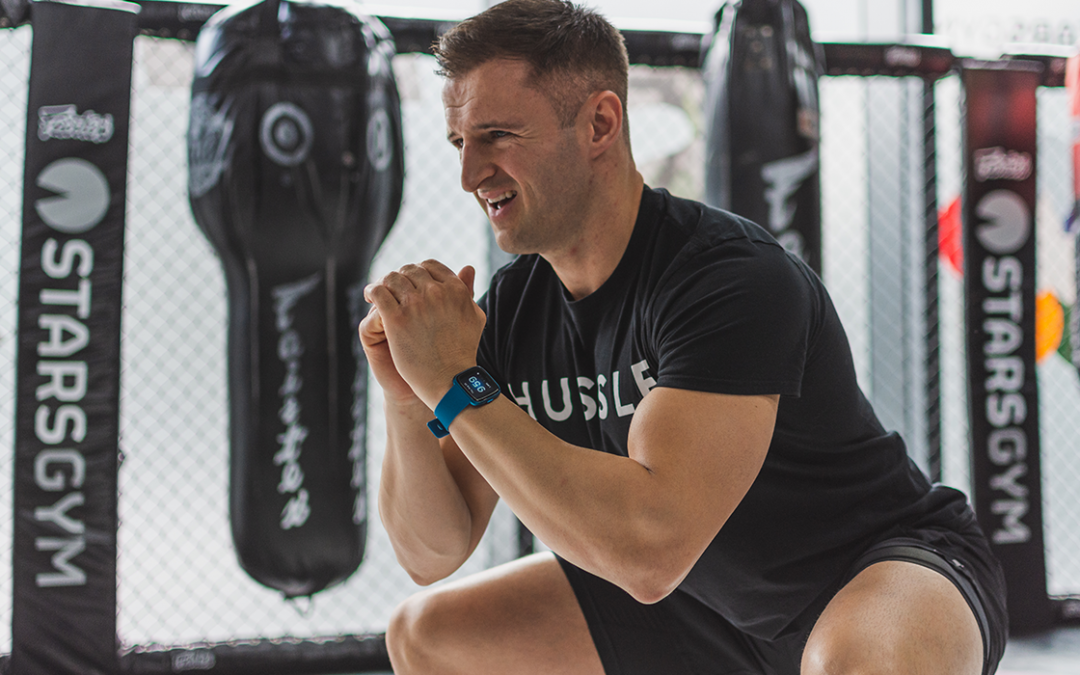It’s probably the most well-known exercise there is. And with good reason. The squat is a functional body movement that we’ve been doing all our lives. We did it as babies, and we do it now.
The squat is an incredibly efficient compound exercise that targets the glutes, quadriceps, and adductor magnus (a group of muscles in the inner thigh) and engages the core (front and back) to help stabilize the movement.
The simple squat does wonders for your lower body strength. And we’ve gotten carried away with it a little bit too. Jump squats. Split squats. Pistol squats. Pulsed squats. Goblet squats. Sumo squats. There’s an endless list of variations to include in your workout routine, depending on your focus and ability.
For strength training and weightlifting, the barbell squat or squats with the free weights are the building blocks of a good lower body routine. But as with all exercises, if the form isn’t there, it’s not as effective. It’s putting us at risk of injury too. It’s crucial to make sure we’re squatting correctly. Because if we’re going to put the effort in, we’ve got to make sure the output is right.
Here are 9 things to know about squat form:
1. For a deep squat the crease of the hips should become parallel with your knees
Before you start increasing the weight you’re using, you need to make sure you can do a deep squat. This means that every rep should see your bum come parallel with your knees. Without reaching this point, it’s called a shallow squat. It’s okay, but it isn’t as effective. To better target the muscles in your lower body, you need to take it deeper. If you’re not there yet, focus on performing a deep squat before adding weight to it.
2. Don’t let your knees fall inwards
It’s a common struggle when you start squatting. It’s also an indicator that you’re lifting too heavy. If your knees begin to fall inwards towards each other, you need to strip it back. Focus on pushing your knees out on the way down to counteract this.
3. Keep your chest pushed out and your head facing forward
It’s tempting to hunch over and look down when squatting but to protect your posture and engage your core properly, you need to keep your chest and head facing outwards. Don’t let yourself arch forward, or you risk injuring your lower back.
4. Focus on shifting your weight into your heels
To avoid your knees coming past your toes and keep yourself from leaning forward, focus on keeping your body weight in your heels rather than your toes. This will help to target the better glutes too.
5. Don’t go down too fast
Going too quickly on the descent of the squat means your muscles might relax a bit at the bottom. When this happens, the tension is lost from the movement. Plus, you might find it challenging to come back up again, which risks injury.
6. Explode on the upward
The upward part of the squat is the time for explosiveness. Especially if you’re lifting weight. Practice your power. Slow and controlled on the way down, explosive on the way up.
7. Squeeze at the top
Complete the movement by squeezing the glutes at the top of the squat. Use it as a chance to check in with your posture, too, before beginning the next one.
8. Keep your core braced
To stabilize the movement and protect your back, keep your core engaged at all times. This exercise relies on the core a lot, so make sure it’s involved and supporting the movement.
9. Point your toes outward slightly
It might help you to point your toes outward slightly. This isn’t a must, but it can help increase your base a little bit, meaning you can lift heavier. Keep the angle within 15-30 degrees. No more than that.
Time to test out what you’ve got and squat.



